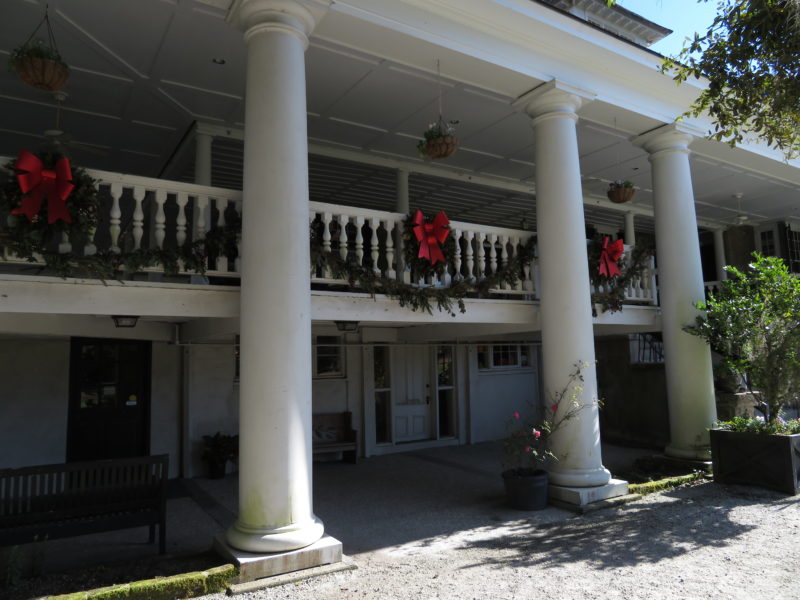
Gone with the Wind was a book that I devoured as a tween, blissfully oblivious to the historic context and fully caught by fantasies of emulating Ms. O’Hara. Neither Wilkes nor Butlers in plain sight as love interests for this 12-year old, alas. I should have visited Magnolia Plantation then, my ignorance of slavery a shield against conflicting feelings.

The plantation was founded in 1676 by the Drayton family, and continually held and expanded by them, with wealth from slave-produced rice crops. I did not visit the slave cabins, which were in use from early on until 1990 (!) and only have been subject to historic protection for the last 5 years. http://www.magnoliaplantation.com/slaverytofreedom.html

I focused on the gardens which are astonishing, even in winter. Again, the dialectic of suffering and beauty seems a Leitmotiv in my S.C. sojourn. The man who created the gardens at the beginning of the 19th century had unexpectedly fallen into the inheritance of the plantation at age 22; he really wanted to pursue his career as a minister, a devout man. He also saw his Philadelphia bride languish for home and tried to cheer her with the gardens. He was the first to bring azaleas to the country and cultivate camellia Japonica for southern climes. A good guy, in essence, deeply anchored in a love for God and nature – and a slave holder.



The plantation suffered from the losses in the civil war and opened up, thus able to survive, its gardens to the public in the late 18oos. In our century the Audubon Society is also represented, having created a swamp walk of breathtaking beauty, where you practically stumble over the wildlife.







The slaves and their descendants were buried in the swampy woods. 
The Draytons were by marriage related to the Grinkés, an elite Charleston family that produced two of the most remarkable women the South has ever seen. Born among 13 children into a rich, pro-slavery household, their father a Supreme Court Judge, Sarah and Angelina both escaped Charleston around 1820 to become Quakers in Philadelphia and start careers as abolitionist writers, thinkers and lecturers. The older one also became a feminist and tried to test the 15th amendment (allowing men of all races to vote) by trying to vote when she was almost 80 years old. Contrast here, too: the abolitionists welcomed women among their brethren but the moment these started to argue for women’ rights they were told to let go and were actively oppressed.
The 19th amendment to the U.S. Constitution was eventually ratified in 1920, giving women the right to vote after a 72-year struggle. 6 months earlier, the League of Women Voters was founded during the convention of the National American Woman Suffrage Association. A good thing, one might think, but also riddled with complications: it has been argued that the women’ right to vote was needed to counterbalance the rights granted to Black men and that the suffrage movement discriminated strongly against their Black sisters. Link below gives a short summary of the claims: https://www.teenvogue.com/story/womens-suffrage-leaders-left-out-black-women
Harriet Simon brought the LWV to Charleston, standing out among her class as a moderate liberal, and seemingly progressive. She did a lot of good, fighting on the right side in questions of desegregation, but also had a problem admitting Black women into the fold of the League. I think it is important to value what these women accomplished surrounded by overt racism that few of us experience in our own personal lives as sheltered, Northern US Whites or Europeans, accused as traitors to their own race. They showed courage and persistence, despite slow, incremental steps toward more equality.

Should you feel inclined to see her grave, these signs will greet you. The place is filled with birds, confederate flags and inscriptions longing for the past.









Sara Lee
Wonderful pictures! Interesting commentary. Likely you meant Grimke (with an m) as the last name of Sarah and Angelina?
Carl Wolfsohn
Great history. Thank you!